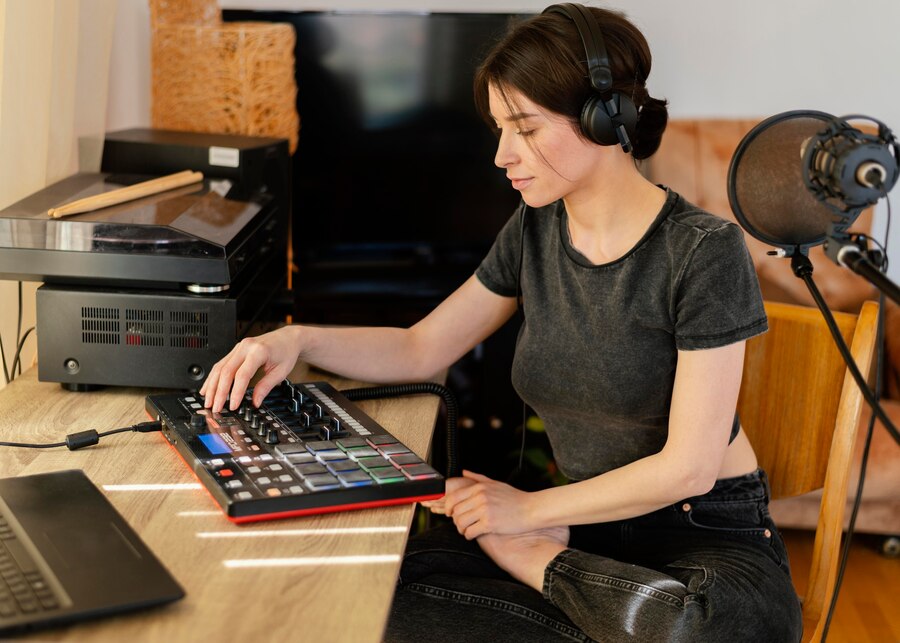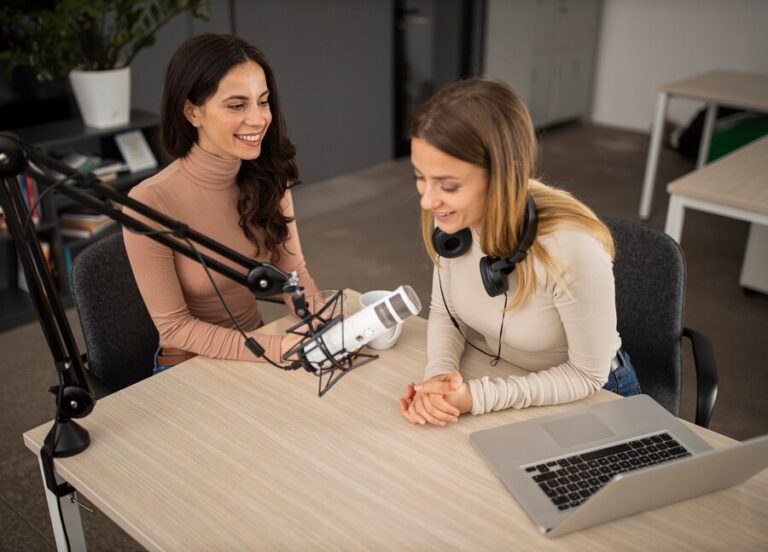Best Audio Interfaces for Voiceover Artists: A Complete Guide

Introduction: Why Choosing the Right Audio Interface Matters
In the world of voiceovers, clarity, depth, and warmth in your recordings can make or break your career. A high-quality microphone alone won’t do the trick—you need the right audio interface to bridge the gap between your voice and your digital recording setup. But with countless options on the market, how do you choose the best one for your needs?
This guide takes a deep dive into the best audio interfaces for voiceover artists, breaking down the essentials, comparing top models, and offering expert insights to help you make an informed decision.
What is an Audio Interface, and Why Do You Need One?
An audio interface is the critical link between your microphone and computer. It converts your analog voice signals into digital data that your recording software can process. Without one, you’d be stuck with subpar sound quality, latency issues, and limited control over your recordings.
Key Benefits of Using an Audio Interface:
- Improved Sound Quality – Higher bit rates and sample rates ensure clean, professional-grade audio.
- Low Latency – Reduces the delay between speaking and hearing yourself in real-time.
- Phantom Power – Essential for condenser microphones.
- Better Connectivity – Allows the use of XLR microphones, studio headphones, and external monitors.
Now that you understand why an audio interface is crucial, let’s explore the features that matter most.
Essential Features to Look for in an Audio Interface
Not all audio interfaces are created equal. Here are the key factors to consider when selecting one for voiceover work:
1. High-Quality Preamps
The preamp is responsible for amplifying your microphone’s signal without introducing noise. Look for interfaces with low self-noise and clean gain.
2. Bit Depth & Sample Rate
A standard for professional voiceover work is 24-bit depth and 48kHz sample rate or higher. This ensures precise sound capture.
3. Number of Inputs and Outputs
For voiceover artists, a single XLR input is often sufficient. However, if you plan to expand your setup (e.g., multiple mic recordings), consider an interface with two or more inputs.
4. Phantom Power (48V)
Many high-end microphones require phantom power to function properly. Ensure your interface supports this feature.
5. Connectivity (USB, Thunderbolt, or PCIe?)
- USB interfaces are widely compatible and user-friendly.
- Thunderbolt offers lower latency and faster data transfer.
- PCIe is typically reserved for advanced studio setups.
6. Latency and Direct Monitoring
Low-latency monitoring is essential for real-time feedback while recording. Direct monitoring ensures there’s no delay in what you hear.
Top 5 Best Audio Interfaces for Voiceover Artists
Based on expert reviews, user experiences, and value for money, here are the best audio interfaces for voiceover artists in 2025:
1. Focusrite Scarlett 2i2 (3rd Gen) – Best for Beginners
Why It Stands Out:
- Industry-leading preamps with low-noise and high-gain
- 24-bit/192kHz audio resolution for pristine sound
- USB-powered for portability
- Affordable and user-friendly
👉 Perfect for entry-level voiceover artists who want professional quality without breaking the bank.
2. Universal Audio Apollo Twin X – Best for Professionals
Why It Stands Out:
- Superior preamps with Unison technology
- Built-in UAD plugins for real-time vocal enhancement
- Thunderbolt connectivity for ultra-low latency
- High-end A/D conversion for studio-grade sound
👉 Ideal for serious professionals looking for top-tier recording quality.
3. Audient iD4 MkII – Best Budget Option
Why It Stands Out:
- Class-A preamps deliver warmth and clarity
- Low-latency monitoring for seamless recording
- Compact and affordable, yet highly durable
👉 A fantastic budget-friendly option for home studio setups.
4. RME Babyface Pro FS – Best for Advanced Users
Why It Stands Out:
- Ultra-low latency with premium A/D converters
- TotalMix FX software for customized audio routing
- Exceptional sound clarity and detail
👉 Great for seasoned voiceover professionals who demand the best audio performance.
5. MOTU M2 – Best for Streamers & Podcasters
Why It Stands Out:
- Loopback feature for podcasting & live streaming
- Crystal-clear preamps and LCD metering
- USB-C connectivity for modern workflows
👉 A solid choice for voiceover artists who also stream or create content.
🔍 Comparison Table: Best Audio Interfaces for Voiceover
| Audio Interface | Preamps | Bit Depth/Sample Rate | Connectivity | Best For |
|---|---|---|---|---|
| Focusrite Scarlett 2i2 | High-quality | 24-bit/192kHz | USB | Beginners |
| Universal Audio Apollo Twin X | Unison Preamps | 24-bit/192kHz | Thunderbolt | Professionals |
| Audient iD4 MkII | Class-A | 24-bit/96kHz | USB | Budget-Conscious Users |
| RME Babyface Pro FS | Premium | 24-bit/192kHz | USB | Advanced Users |
| MOTU M2 | Clean Preamps | 24-bit/192kHz | USB-C | Streamers/Podcasters |
Frequently Asked Questions (FAQs)
1. Do I need an expensive audio interface for voiceovers?
Not necessarily. While high-end interfaces offer superior sound quality, many budget-friendly options (like the Focusrite Scarlett 2i2) deliver professional results.
2. What’s the best connectivity option: USB, Thunderbolt, or PCIe?
For most voiceover artists, USB interfaces are sufficient. Thunderbolt is better for professionals needing low latency and high-speed data transfer.
3. Do I need phantom power for my microphone?
If you use a condenser microphone, yes. Make sure your interface supports 48V phantom power.
4. What’s the difference between bit depth and sample rate?
- Bit depth affects dynamic range; 24-bit is ideal.
- Sample rate determines frequency detail; 48kHz or higher is recommended.
Conclusion: Choosing the Best Audio Interface for Your Needs
Selecting the right audio interface is a game-changer for voiceover artists. Whether you’re just starting or you’re a seasoned professional, investing in a high-quality interface will significantly improve your sound.
Consider your budget, recording needs, and future plans when making a choice. The right interface will enhance your voice and give you the competitive edge in the industry.
🎙️ Ready to upgrade your voiceover setup? Pick the best interface that matches your needs and start recording like a pro!






